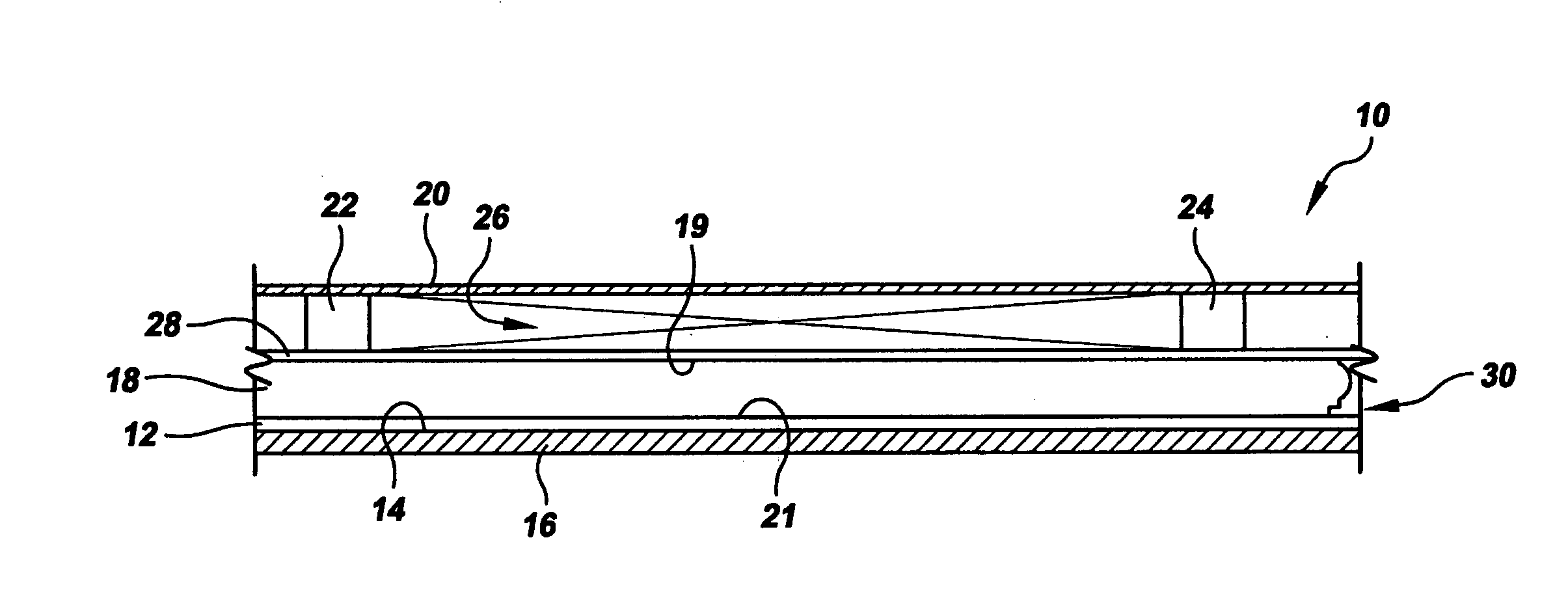Photovoltaic roof-top components, a photovoltaic IRMA roofing system, and a photovoltaic roofing system
- Summary
- Abstract
- Description
- Claims
- Application Information
AI Technical Summary
Benefits of technology
Problems solved by technology
Method used
Image
Examples
Embodiment Construction
[0049] Referring to the drawings in detail, an improved photovoltaic roofing system is shown in FIG. 1, and is generally designated by the reference numeral 10. The system 10 includes a roofing membrane 12 overlying a top surface 14 of a roofing deck 16. An improved photovoltaic insulation layer 18 is above the roofing membrane 12. A photovoltaic panel 20 is above the insulation layer 18 and supported typically by way of insulation blocks or spacers 22, 24 that may provide an air space 26. (For purposes herein, the word “above” is to mean opposed to the direction of gravity. Additionally, hereinafter the phrase “secured to” is to mean either, “overlying”, “above” or “adjacent”, and does not mean that any securing apparatus or force is necessarily applied to adhere adjacent components to each other.) The improved insulation layer 18 may be secured to the photovoltaic panel 20 by being laminated to the panel 20, or to the panel spacers 22, 24, by lamination securing means known in the...
PUM
 Login to View More
Login to View More Abstract
Description
Claims
Application Information
 Login to View More
Login to View More - R&D
- Intellectual Property
- Life Sciences
- Materials
- Tech Scout
- Unparalleled Data Quality
- Higher Quality Content
- 60% Fewer Hallucinations
Browse by: Latest US Patents, China's latest patents, Technical Efficacy Thesaurus, Application Domain, Technology Topic, Popular Technical Reports.
© 2025 PatSnap. All rights reserved.Legal|Privacy policy|Modern Slavery Act Transparency Statement|Sitemap|About US| Contact US: help@patsnap.com



